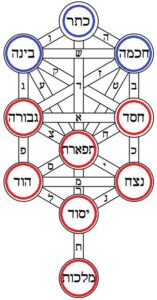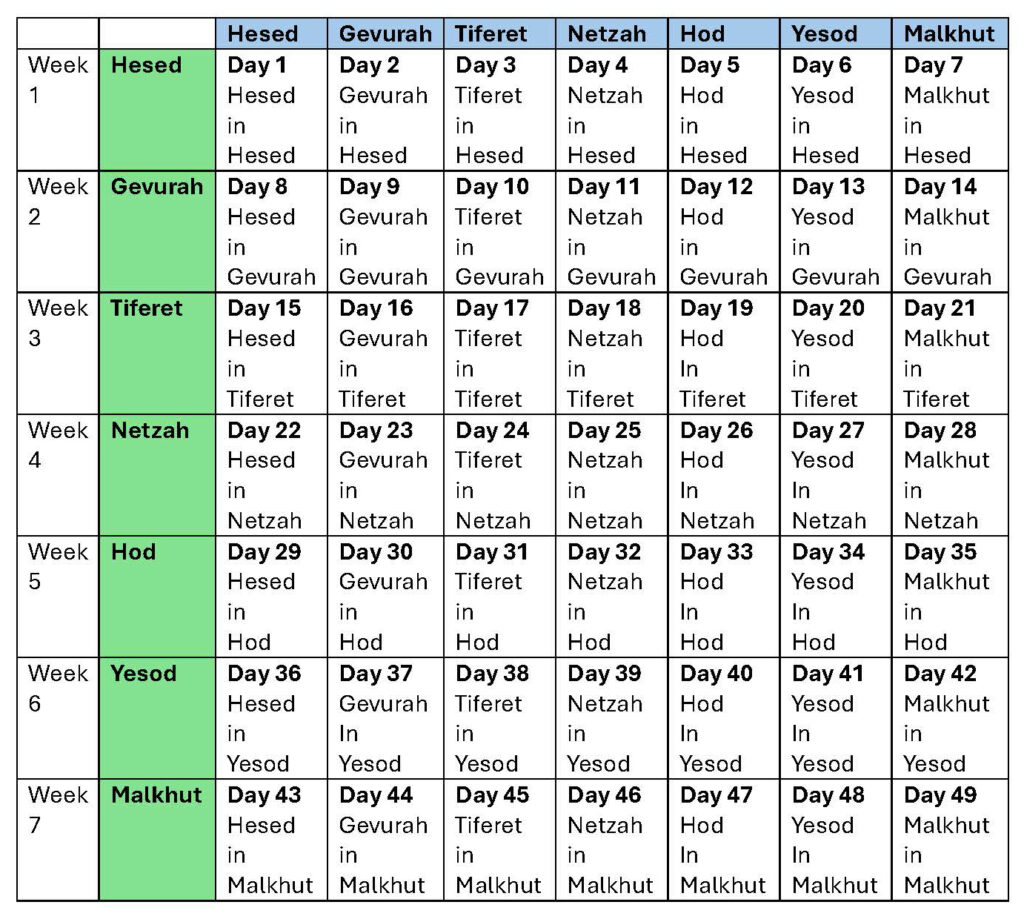Beginning on the second day of Passover, Jews begin to count the Omer, in Hebrew, Sefirat HaOmer. The Omer was a special offering of barley that was brought to the Temple on the second day of Passover (Leviticus 23:10-14). The people were instructed to bring an offering of an omer of barley taken from the first harvest to the Temple. An omer was a biblical measurement (approximately 43 oz). The barley collected from all the people would be ground to produce three se’ah (approximately 6 ½ gallons) of flour. One-tenth of this barley flour would be removed for an offering on the altar, and the rest would be eaten by the Cohanim. Seems pretty simple. Passover, aside from being the holiday celebrating the exodus from Egypt, was also, like Sukkot and Shavuot, a harvest festival.
But here is where it gets interesting. Immediately following this commandment, we get another one (Leviticus 23:15-16). We are told to count off seven complete weeks (hold on to the word complete as it will be important later). The text continues and refines that a bit more, and says that we must count until the day after the seventh week, 50 days. Today, people often call this period the Sefira or the counting.
Every night from the 2nd night of Passover we count the Omer, either communal at the end of the Maariv service, or individually, at any time during the night. We say a blessing before the count since this is a Torah commandment. The blessing is:
.בָּרוּךְ אַתָּה יְיָ אֱלֹהֵֽינוּ מֶֽלֶךְ הָעוֹלָם, אֲשֶׁר קִדְּשָֽׁנוּ בְּמִצְוֹתָיו, וְצִוָּֽנוּ עַל סְפִירַת הָעֹֽמֶר
Praised are you, Adonai, our God, Sovereign of the universe, who, sanctifying us with commandments, has commanded us regarding the counting of the Omer.
Then, after the blessing, we count the specific day. This is done by counting the number of days AND how many full weeks and extra days have passed as well.[1] We do this extra step because the Torah says to count weeks in one verse and then days in the next verse. So, for example, on the first night (usually said during the Passover Seder), we say, “today is one day of the Omer”. On the second night, we would say “today is two days of the Omer”, and on the 10th night (for example), we would say “today is ten days, which is one week and three days of the Omer”. If you forget to count the Omer one night, you can do the count during the day without saying the blessing and then continue to count each night with the blessing.
One question that comes up in counting is, “Is the Mitzvah to count all 49 days, or is each counting a Mitzvah in and of itself?” It would seem on the surface that the latter were true, because we say a blessing each night when we count the day. However, we learn in the Shulchan Arukh Orach Chayyim 489:8, that if you forget to count the Omer for a full day, you can then continue to count the days, but without a blessing. This assumes that the Mitzvah is on the entire counting of all 49 days, and not each one separately.
Recall, at the start of this essay, I suggested that you remember the word “complete” from the verse in the Torah. The question becomes, does “complete” refer to the entire counting of all 49 days, or does “complete” mean that the obligation to count begins at night so that each day itself is complete? There are numerous arguments for and against each of these opinions.[2] My preference is to consider each day a Mitzvah in and of itself, and continue to say the blessing regardless of how many times you may have missed counting.
To help count the omer, I have a nice little omer counting app here on my site. Go to https://longandwinding.goldwasserfamily.org/omer-counter/
Now, what are Sefirot, and how does that connect to Sefirat HaOmer? Sefirot refers to the ten attributes (or emanations) in Kabbalah. Not wanting to make this an essay about Kabbalah, I will use Rabbi Wikipedia’s definition, which says that “Sefirot are the 10 attributes/emanations in Kabbalah through which Ein Sof [God] reveals itself and continuously creates both the physical realm and the metaphysical realm”.[3]

The Kabbalists split this into upper (three) and lower (seven) sefirot. They applied the seven lower sefirot to the counting of the Omer. So, each week of the Omer corresponds to one of the sefirot, and each day of each week also corresponds to one of the sefirot.

So, for each week, one should have in mind these different aspects of God’s continued revelation in the world.
Week 1 – Hesed – Lovingkindness
Week 2 – Gevurah – Strength
Week 3 – Tiferet – Beauty
Week 4 – Netzah – Victory
Week 5 – Hod – Splendor
Week 6 – Yesod – Foundation
Week 7 – Malkhut – Kingship
Finally, each day of each week, we need to consider how these aspects interact with each other, and themselves. For example, on the first day, we can think about Lovingkindness IN Lovingkindness. On day two Strength IN Lovingkindness, etc. By adding this mystical dimension to the counting of the Omer, we can take a mundane task and insert a little of the divine into each day.
[1] Shulchan Arukh Orach Chayyim 489:1
[2] For an excellent discussion of these sources, see the teshuva by Rabbis Bradley Artson and Aaron Alexander “A Missed Day in the Life of the Omer”
